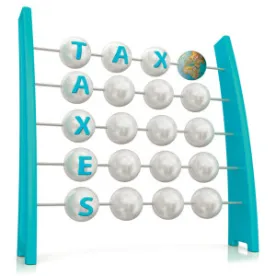The Tax Cuts and Jobs Act (the Act) was passed by the House and Senate and is expected to be signed into law by President Trump soon. As noted in our blog post earlier this week, the Act makes significant changes to certain Internal Revenue Code (Code) provisions dealing with highly compensated employees. Among these are restrictions (in the form of excise taxes) on compensation of certain highly paid employees of “applicable tax-exempt organizations” (i.e., 501(c) organizations, political organizations, and farmers’ cooperatives as well as federal, state, and local governmental entities with excludable income).
Effective for all taxable years beginning after December 31, 2017, new Code Section 4960 imposes an excise tax on applicable tax-exempt organizations where the “remuneration” received by an employee (or former employee) that is one of the five highest compensated employees for any prior taxable year beginning after December 31, 2016 exceeds certain amounts. For this purpose, remuneration includes amounts that become taxable under Code Section 457(f) upon a lapse of a substantial risk of forfeiture, but excludes amounts paid directly to certain medical professionals for performance of services. Amounts credited under a qualified plan are not included in remuneration. The Code Section 4960 excise tax equals 21% of the sum of
- any remuneration (other than an excess parachute payment) in excess of $1 million paid to a covered employee by an applicable tax-exempt organization for a taxable year; and
- any excess parachute payment paid by the applicable tax-exempt organization to a covered employee.
- The “excess parachute payment” equals the amount that the “parachute payment” exceeds the covered employee’s “base amount.”
- The “parachute payment” is compensation that is contingent upon the covered employee’s separation from employment that exceeds three times the base amount; and
- The “base amount” is the average annualized compensation includible in the covered employee’s gross income for the five taxable years ending prior to the date of the employee’s separation from employment.
- The “excess parachute payment” equals the amount that the “parachute payment” exceeds the covered employee’s “base amount.”
What to do before year-end?
Applicable tax-exempt organizations should evaluate whether any covered employee will have income in excess of $1 million dollars for taxable years beginning after December 31, 2017. If so, such organizations may want to consider whether it is possible to accelerate the payment of future compensation into an earlier year to reduce the compensation subject to the excise tax. While planning opportunities may be limited, in certain circumstances, it may be possible to take certain actions that mitigate the impact of the excise tax. For example, an organization that is on a calendar year tax year can accelerate the payment of a bonus into 2017 or accelerate the vesting, taxation, and/or payment of deferred compensation into 2017.
To the extent covered employee compensation otherwise payable in a future year that would exceed $1 million is taxed in 2017, the organization will benefit from a 21% savings. However, there are potentially some adverse consequences resulting from these sorts of actions that may need to be evaluated as follows:
- Action would need to be taken in 2017. Getting appropriate approvals, including corporate and/or committee approvals and, if desired, input from a compensation consultant on the reasonableness of the accelerated compensation, may be difficult given holiday schedules
- Accelerating compensation into 2017 will make the amounts taxable to the covered employees at the currently slightly higher marginal rate
- If the action involves accelerating vesting of bonuses or deferred compensation, the applicable tax-exempt organization would lose the retention associated with the compensation
- The accelerated compensation would be reported on the Form 990 for the year in which it is taxed.
Given these potential consequences, organizations should carefully evaluate any planning approaches intended to mitigate the impact of the new excise tax rules.




 />i
/>i

